Keywords
Light trap, Trichoptera, E?irdir Lake, Turkey.
Introduction
Trichoptera is one of the richest taxa of the aquatic insects in species except Dipterans (Arscott et al. 2003). Light traps are the sampling tools that are used in both terrestrial and aquatic habitats. The methods applied in light traps, which are used as a catching tool in aquatic insects, have been benefited especially in sampling the Trichoptera species very usefully (Waringer, 2003). Although they are selector and the caught ones are affected by the meteorological parameters, the light traps are used commonly (Schmera and K?ss 2004). With this purpose, the responses of the insect populations to environmental conditions and phenology and voltinism that are faunistic and ecological aspects can be searched (Waringer, 2003). Identifying the composition of insects that are the aquatic organism assemblages which directly reflect the functions of ecosystem is a powerful technique (Houghton, 2003). Ecosystem, a community with the environment interaction is identified with its biological species (Obach, et al. 2001). The alteration of human has been effective on the distribution of organisms. The conservation value can be applied by different scales. This value shows difference from natural state to impaired state (Schmera and K?ss 2004). It’s necessary to know the biological variance to follow the distribution and to identify the ecological characters too, with the changes of lake basins especially in the natural life process.
It has been reported that the first studies concerning the Trichoptera fauna of Lakes District, which also includes E?irdir Lake, were started in 1987 (Sipahiler and Malicky 1987) and Sipahiler reported 10 species (Sipahiler, 2003). E?irdir Lake, which is in the A class wetland status, is the fourth biggest lake of Turkey (Figure 1-2).
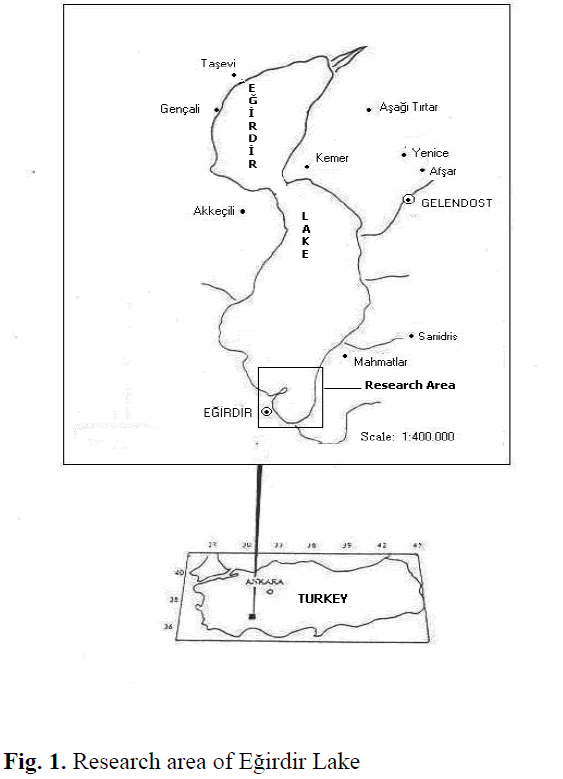
Figure 1. Research area of E?irdir Lake
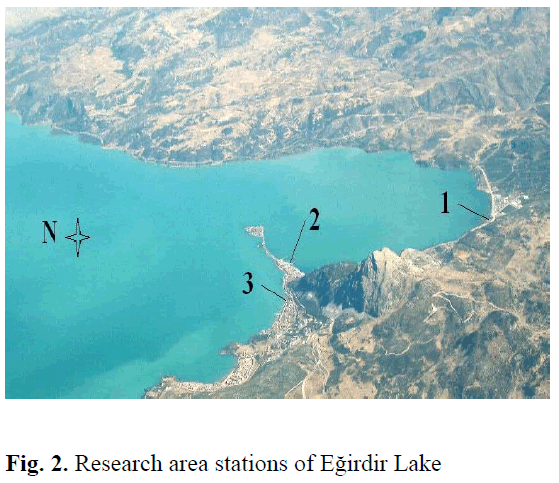
Figure 2: Research area stations of E?irdir Lake
The aim of this study was to search Trichoptera fauna and report the flight periods as well as calculation of relative abundance.
Materials and Methods
E?irdir Lake is situated in the north of E?irdir Town, Isparta province (Alt?nkale, 2001). The altitude is 917 m. and is situated between 37050’41’’- 38016’55’’ north latitude and 030044’39’’ - 030057’43’’ east longitude (Figure 1, 2).
Sampling time, the watt of light source, the dimension of sampling tool determines the representative samples that are active at nights (Houghton, 2003). Special-made black light traps were used to catch adults Trichoptera (Figure 3). The light traps were set up in different three stations in the lake shore.
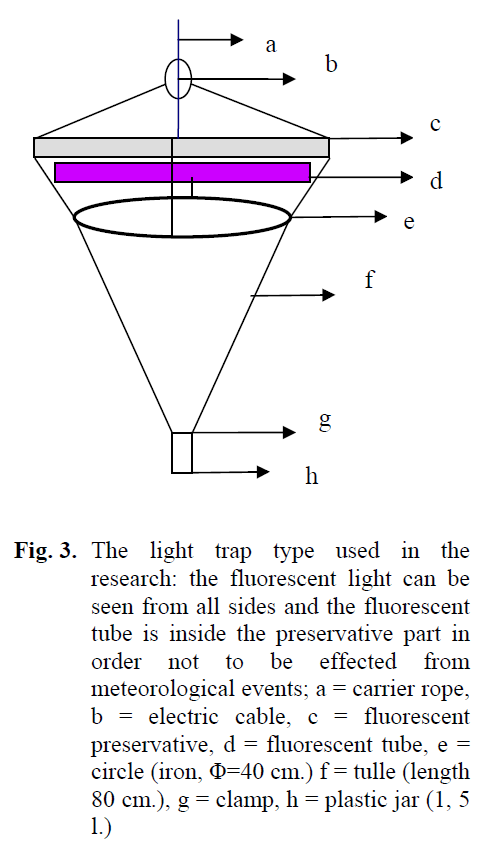
Figure 3: The light trap type used in the research: the fluorescent light can be seen from all sides and the fluorescent tube is inside the preservative part in order not to be effected from meteorological events; a = carrier rope, b = electric cable, c = fluorescent preservative, d = fluorescent tube, e = circle (iron, Φ=40 cm.) f = tulle (length 80 cm.), g = clamp, h = plastic jar (1, 5 l.)
From April 11th 2004 to November 17th 2004 Trichoptera was sampled two hours once a week after the sunset. Species selected from each 3 stations were evaluated numerically without discriminating the stations. The research region’s water quality variables and the meteorological datas were analyzed. The rates of Trichoptera species were shown by relative abundance (Krebs, 1989).
Relative abundance %= (ni / N) X 100 where ni data to the number of individuals of the species in the sample and N refers to the total number of individuals of Trichoptera caught in the lake.
The effect of water temperature on the species was analyzed by Chi square in the SPSS program. The specimens caught by light traps were kept in 70 percent of alcohol in E?irdir Fisheries Faculty of Süleyman Demirel University. Prof. Dr. Füsun Sipahiler identified the specimens.
Results and Discussion
Flight Periods
Ecnomidae
Ecnomus tenellus Rambur,1842: Jun 2, 1?, 1?; Jun 9, 24 ??, 12??; Jun 16, 249 ??, 204 ??; Jun 23, 76??, 10 ??; Jun 30, 143??, 259 ??; Jul 7, 41 ??, 28?; Jul 14, 13??, 5?; Jul 21, 10??, 4?; Jul 28, 37??, 32?; Aug 4, 1695 ??, 622?; Aug 18, 61??, 34?; Aug 25, 64??, 52??; Sep 1, 70?, 15?; Sep 8, 218??, 36?; Sep 15, 3??, 1?; Sep 22, 4?, 1?; Sep 29, 2??
Hydropsyche
Hydropsyche bulbifera McLachlan,1878: May 14, 2??; Jun 2, 10??; Jun 9, 31??, 1?; Jun 16, 1??; Jun 23, 1?; Jun 30, 56?; Jul 7, 7??; Jul 14, 18??, 1?; Jul 21, 13??, 4??; Jul 28, 59??, 19??; Aug 4, 50??, 9??; Aug 18, 4???, 2??; Aug 25, 1?; Sep 1, 33?, 4??; Sep 8, 11??, 4?; Sep 15, 6?; Sep 22, 19??, 3?; Sep 29, 5??, 4??; Oct 1?; Oct 20, 2??, 2??; Oct 27, 1?;
Hydroptilidae
Hydroptila angustata Mosely,1939: April13, 1?; May 5, 6?, 3??; May 6, 8?, 3??; May 13,1?; May 14, 3??, 7??; May 19, 3??, 1?; Jun 2, 1?; Jun 9, 1?, 1?; Jun 16, 3??, 4??; Jun 23, 27??, 7??; Jun 30, 1?, 11??; Jul 7, 1?, 1?; Jul 14, 1?, 3??; Jul 21, 39??, 18??; Jul 28, 105??, 183??; Aug 4, 21??, 26??; Sep 1, 4??, 4??; Sep 8, 1?, 5??; Sep 15, 2??, 1?; Sep 22, 5??, 7??; Sep 29, 7?, 4??; Oct 6, 1?; Oct 20, 3??, 8??; Oct 27, 1?;
Hydroptila aegyptia Ulmer,1963: May 19, 2?; Jun 2, 6??; Jun 9, 1?; Jun 16, 12??, 1086??; Jun 23, 168??; Jun 30, 3??, 73??; Jul 7, 2??, 50?; Jul 14, 86??; Jul 21, 18??, 2230??; Jul 28, 12??, 2659??; Aug 4, 2??, 396??; Aug 18, 104??; Sep 1, 75??; Sep 8, 29??; Sep 15, 8??; Sep 22, 3??; Sep 29, 33??; Oct 13, 3??; Oct 20, 4??; Oct 27, 1?; Nov 3, 2??;
Agraylea sexmaculata Curtis,1834: Jun 2, 1?; Jun 9, 1?, 27??; Jun 16, 8??, 105??; Jun 23, 3??; Jun 30, 2??, 237??; Jul 7, 12??, 170??; Jul 14, 1?, 9??; Jul 21, 52??, 85??; Jul 28, 9??, 27??; Aug 4, 15??; Aug 18, 4??, 10??; Sep 1, 11??, 1?; Sep 8, 7??, 34??; Sep 15, 6??; Sep 29, 2??; Oct 20, 6??, 2??; Nov 3, 1?;
Orthoctrichia costalis Curtis, 1834: Jun 16, 9??; Jun 30, 4??, 13??; Jul 21, 4??; Aug 4, 1?; Aug 18, 1?; Aug 25, 1?; Sep 1, 3??; Sep 8, 3??; Sep 22, 1?;
Leptoceridae
Mystacides nigra Linnaeus, 1825: April 11, 2??; May 19, 1?; May 26, 1?, 5??; Jun 2, 32??, 118??; Jun 9, 10??, 22??; Jun 16, 39??, 91??; Jun 23, 10??, 39??; Jun 30, 8??, 18??; Jul 7, 2??, 17??; Jul 14, 7??; Jul 21, 26??, 113??; Jul 28, 20??, 60??; Aug 4, 3??, 44??; Aug 25, 1?, 10??; Sep 1, 5??; Sep 8, 13??; Sep 15, 2??; Sep 22, 3??, 6??; Sep 29, 2??, 25??; Oct 6, 1?;
Oecetis ochracea Curtis,1825: May 26, 2?, 41??; Jun 2, 95??, 822??; Jun 9, 293??, 1226 ??; Jun 16, 4322??, 2049??; Jun 23, 549??, 1318??; Jun 30, 2420??, 5635??; Jul 7, 1497??, 818??; Jul 14, 45??, 293??; Jul 21, 2239??, 3254??; Jul 28, 547??, 525??; Aug 4, 110??, 429??; Aug 11, 19??, 199??; Aug 18, 57??, 182??; Aug 25, 93??, 166??; Sep 1, 3??, 15??; Sep 8, 14??, 35??; Sep 15, 2??, 9??; Sep 29, 3??, 11??; Oct 20, 2??; Nov 3, 1?;
Athripsodes longispinosus Martynov,1909: Jun 2, 13??, 20??; Jun 9, 414??, 559??; Jun 16, 1022??, 1881??; Jun 23, 116??, 214??; Jun 30, 1878??, 4098??; Jul 7, 1247?, 3865??; Jul 14, 485??, 1845??; Jul 21, 1785??, 2921??; Jul 28, 237??, 426??; Aug 4, 887??, 979??; Aug 11, 5??, 6??; Aug 18, 24??, 97??; Aug 25, 136??, 232??; Sep 1, 15??, 24??; Sep 8, 11??, 24??; Sep 15, 8??, 7??; Sep 22, 6??, 7??; Sep 29, 8??, 2??; Oct 6, 1?, 6??; Oct 13, 1?, 1?; Oct 20, 3??, 1?;
Ceraclea senilis Burmeister,1839: Jun 2, 1?; Jun 9, 21??, 22??; Jun 16, 46??, 50??; Jun 23, 7??, 17??; Jun 30, 2??, 24??; Jul 7, 2??; Jul 14, 1?; Jul 21, 1?, 1?; Jul 28, 9??, 11??; Aug 4, 8??, 6??; Aug 18, 1?, 2??; Aug 25, 3??, 2??; Sep 1, 1?; Sep 8, 1?, 4??; Sep 15, 1?; Sep 22, 2??; Sep 29, 2??, 2??; Oct 20, 1?;
Oecetis furva Rambur,1825: Jun 9, 2??, 2??; Jun 16, 2??, 7??; Jun 23, 4??, 7??; Jun 30, 4??; Jul 7, 5??; Jul 21, 1?, 7??; Jul 28, 1?, 20??; Aug 4, 2??, 15??; Aug 11, 1?, 1?; Aug 18, 1?; Aug 25, 2??; Sep 8, 6??; Sep 15, 1?, 1?; Sep 22, 1?; Sep 29, 1?;
Phryganeidae
Phryganea grandis serti Sipahiler, 2000: May 26, 1?, 4??; Jun 2, 31??, 139 ??; Jun 9, 63??, 318??; Jun 16, 140??, 248??; Jun 23, 1?, 3??; Jun 30, 4??, 15??; July 7, 1?.
The distribution of families (Figure 4) and the flight graphics were formed from the count results of species in the traps as weekly (Figure 5). Distribution of species was determined according to the flight period (Table 1). O. ochrace with 29,341 individuals, 42,008 % abundance and A. longispinosus with 25,517 individuals, 36,533 % abundance were the relative abundant species of E?irdir Lake from April 2004 to November 2004. The dominance values were calculated between 10% - 5% in H. aegyptia and E. tenellus, between 5% - 1% in P. grandis serti, A. sexmaculata and M. nigra and between 1% - 0% in H. angustata, H. bulbifera, C. senilis, O. furva and O. costalis (Table 2).
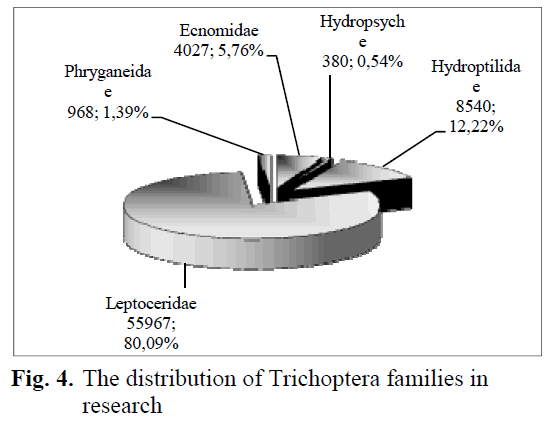
Figure 4: The distribution of Trichoptera families in research
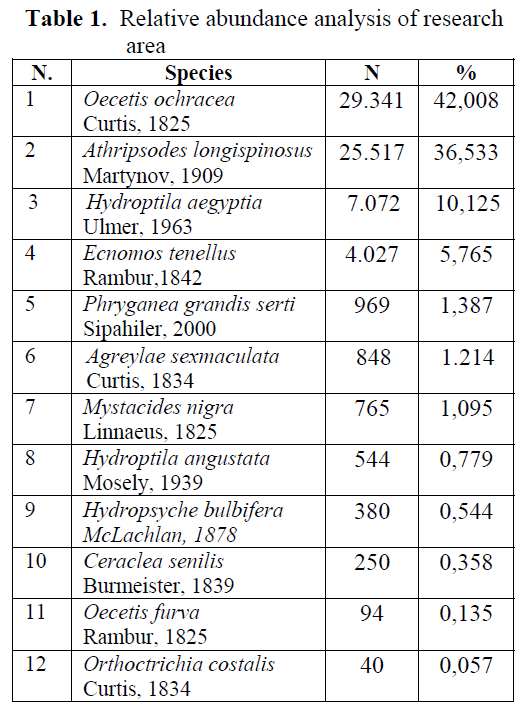
Table 1. Relative abundance analysis of research area
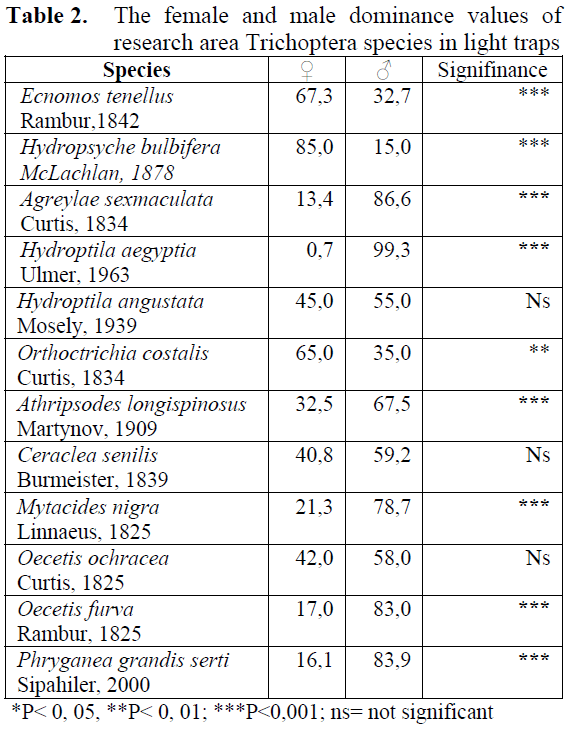
Table 2. The female and male dominance values of research area Trichoptera species in light traps
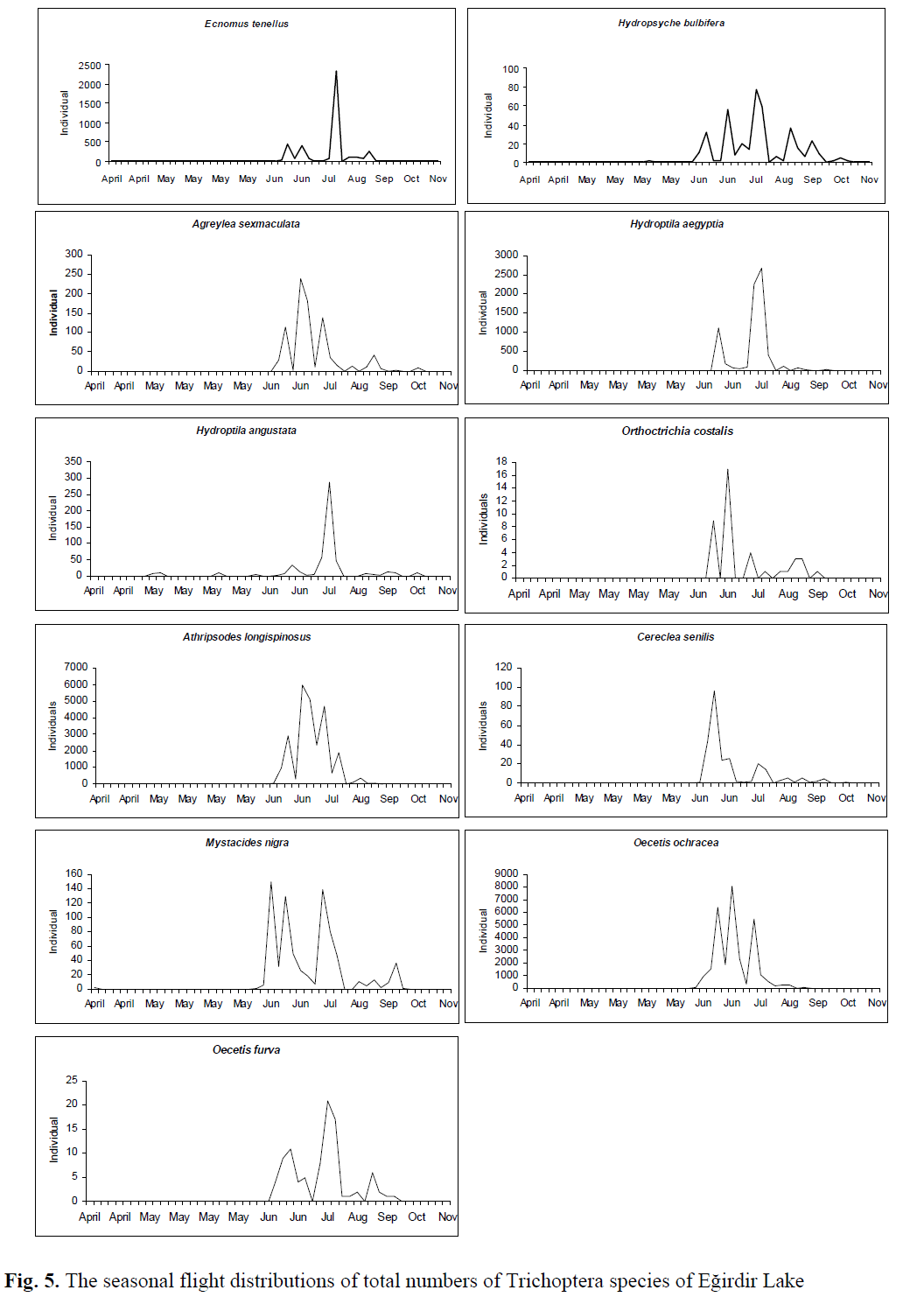
Figure 5: The seasonal flight distributions of total numbers of Trichoptera species of E?irdir Lake
The male and female rates of the species were found different from 1:1 in 8 species of 12, with males excess and female-male ratio was found 1:1 only H. angustata. The male dominance was observed in A. sexmaculata, H. aegyptia, A. longispinosus, C. senilis, M. nigra, O. ochracea, O. furva, P. grandis serti. Significance deviation values were calculated by Chi square test (Table 2). E. tenellus, H. bulbifera, A. sexmaculata, H. aegyptia, A. longispinosus, M. nigra, O. furva and P. grandis serti were significant (P<0,001), O. costalis was significant (P<0, 01) and H. angustata, C. senilis and O. ochracea were negligible in respect of significance deviation values (P>0, 05).
Air temperatures were evaluated by Spearman’s correlation test. H. aegyptia, O. ochraceat (P<0, 01), H. aegyptia and O. costalis were significant (P<0, 05) in related to the effects of air temperature (Table 3).
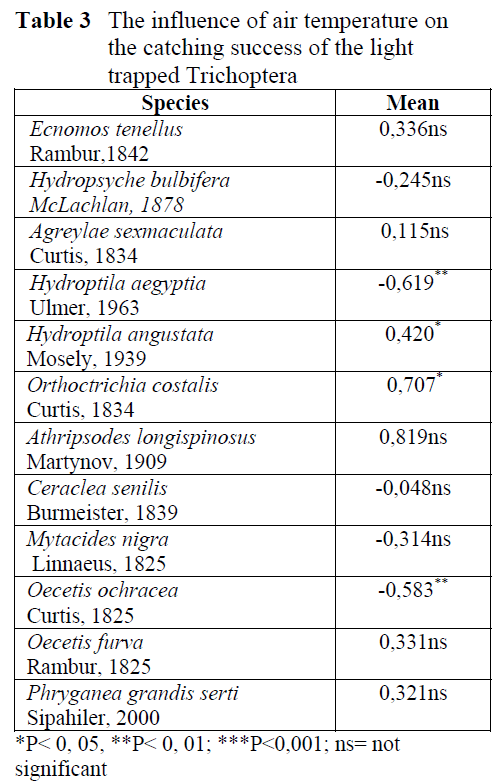
Table 3. The influence of air temperature on the catching success of the light trapped Trichoptera
The knowledge of variance in the habitats provides to answer the questions in relation to how the habitats are managed and protected. Caddisflies are taxonomically rich, for this reason they have an important value for conservation assessment. The adult caddisflies are both taxonomically rich and they prefer strong habitats, almost every character of them consist of a limited property in many special conditions and are species-specific (Greenwood et al. 2001).
The Trichoptera in standing waters mainly inhabit in the littoral zone. Trichoptera in the Central European lakes are basically represented by eight families (Leptoceridae, Psychomyiidae, Molannidae, Ecnomidae, Polycentropodidae, Hydroptilidae, Phryganeidae and Limnephilidae) (K?ss et al. 2003). Turkey’s caddisfly fauna composition shows similarity with many European and Mediterranean countries (Sipahiler and Malicky 1987).
It has been observed that Leptoceridae have 55,967 individuals with the 80 percent, Hydroptilidae have 8,540 individuals with 12 percent, Ecnomidae have 4,027 individuals with 6 percent, Phryganeidae have 968 individuals with 1 percent and Hydropsycdae have 380 individuals with 1 percent (Figure 4). Leptoceridae family was found dominant for E?irdir Lake. Leptoceridae family species can be observed clearly in the first weeks of June and August. Hydroptilidae can be seen clearly in the second half of June and in the first week of August (Table 2 and Figure 5). The termophilic properties of Hydroptilidae and Leptoceridae families (Kumanski, 1977) are one of the factors in the dominance of Leptoceridae families.
E?irdir Lake is an oligotroph lake in water quality parameters and mesotrophic in phytoplankton and epilitic alg species (Aksoylar, 2002). Family, species and individual numbers belong to Trichoptera larvae and adults are the appropriate groups of oligotrophic lake according to water quality (Bonada et al. 2004). Leptoceridae and Hydroptilidae can tolerate both the warm and cool water (Monson, 1994). Trichoptera species are found denser in oligosaprobic, beta-mesosaprobic and alfa-mesosaprobic waters. E. tenellus and A. sexmaculata are indicators of alpha-mesosaprobic waters and O. ochracea is an indicator of betamesosaprobic waters. E. tenellus can also tolerate polysaprobic waters (K?ss, 2002). Jones (1974) reported that E. tenellus is the one of the common species in eutrophic Lake Llyn Hendref. Besides, the population size of O. ochracea species, that are dominant species of E?irdir Lake, shows that the trophic level increases in E?irdir Lake, and the dominance in E. tenellus species also shows the increase in trophic level in E?irdir Lake (Table 1-2). Although Hydropsyche bulbifera McLachlan, 1878 was caught with the traps, it is thought that it comes from Kovada Channel discharging of water of E?irdir Lake.
The flight activities of Trichoptera species show the similarities with the flight activities in Kumanski’s study. Adult Trichoptera can emerge in early March and can be collected up to the middle of December (Kumanski, 1977). The sampling dates of the species of M. nigra, O. furva and E. tenellus in Kiss’s study in 2002 shows similarity with our datas (Figure 5). Greenwood et al. (2001) found the flight periods of Trichoptera species from May to November and the greatest diversity in June and July. Monson (1994) reported that the flight activities of Trichoptera species took place between the end of May and the second week of November. MAcLean 1984 reported that the flight period of Trichoptera species were from late April to early October. June and July were reported to be the peak months for adult caddis flies emergence and flight activity (Houghton, 2003). Trichoptera species of E?irdir Lake also showed similar flight activities between April and November. They reached the highest diversity in June and July. M. nigra and H. angustata are the species that show first flight activities in the early April and H. aegyptia and A. sexmaculata species show the last flight activities towards the middle of November.
M. nigra, H. angustata, H. bulbifera are the species that show early summer and summer flight activites. H. angustata, H. aegyptia, O. ochracea, P. grandis serti, E. tenellus, A. sexmaculata, A. longispinosus, O. furva, O. costalis and Ceraclea senilis are the species that show summer flight activities. The species that show early summer and summer flight activities are the pioneer species that start flying in the spring months. P. grandis serti that shows summer flight activity has univoltine reproduction property. In the lake there are no species that show late summer and autumn flight activities. But except the P. grandis serti that shows early summer and summer flight activities, the species relatively fly in autumn (Figure 5).
Adult Trichoptera can fly several hundred meters, so studies on Trichoptera ecology and population are very useful in identifying Trichoptera habitats. The number of the Trichoptera is affected by either meteorological parameters or history patterns or both of them. The adults of most species are active during the dusk and night time (Ward, 1992). Below 100C, the catch number greatly decreases (Waringer, 2003). It has been observed that the flight activities of Trichoptera increase above 130C air temperature at night (Monson, 1994). Houghton placed the light-traps when day time temperature is 220C and dusk time temperature is above 130C. It has been determined that light trap samples have been seen 100C and above with dusk temperature and the specimen and species diversity has been increased at 150C and above. Air temperature, wind speed, precipitation and humidity affect the abundance and composition of light traps (Houghton, 2003). In the sampling period, the wind, rain, the ambient temperature and the moonlight are the affective factors on species richness and relative abundance (Monson, 1994). The meteorological values (temperature, wind) are effective on the number of caught Trichoptera, on the other hand rain is relatively effective in Trichoptera flights.
The caddis flies were caught in the traps when the air temperature was minimum above ≥ 10.20C and maximum below ≤ 27,50C. The wind is another factor in identifying the flight activities of Trichoptera species. Our observations showed that when the wind’s speed was 5, 5 ≥ meter/seconds, Trichoptera species couldn’t show any flight activities.
Trichoptera individuals intensively show mating, laying eggs, leaving pupa and flight activities near the sunset time. Catching time is in the dusk period and a short time after the dusk. For this reason, the sex ratio belonged to samples are important values.
The female of E. tenellus and H. bulbifera, the male of A. sexmaculata and H. aegyptia, the female of O. costalis and the nearly equal amount of male and female in the H. angustata species from family Hydroptilidae, the males of the family Leptoceridae and the males of the P. grandis serti species are dominant in light traps (Table 1). The specimens collected in the light traps showed the attraction towards the light, because light trap samples don’t reflect the natural proportions (Monson, 1994). In our study, the male dominance in the light traps has been observed when the individuals reached the peak points. Waringer (2003) reported that A. sexmaculata, O. costalis and O. ochracea showed similarities in male and female dominance values. In John’s (1969) study, the sex ratios of E. tenellus was 59% female (Table 2).
P. grandis serti, M. nigra and O. ochracea can copulate on the air and place. It was observed that the males of P. grandis serti looked for females and also mated under the trap light. It was seen that the P. grandis serti, M. nigra, O. ochracea and A. longispinosus laid their eggs on the traps, stones, plants and walls around the trap light.
Many environmental factors affect the emergence of aquatic invertebrates. Adult phylogeny and latitude are affective factors in the growth. It is seen that, the temperature and photoperiod are important in the growth of caddisflies and as a result photoperiod change influences the emergence of caddisflies species. Food quality and quantity affect the growth and play an important role in aquatic phylogeny. Feeding lower in nutrients delays the emergence (Monson, 1994
Conclusions
The change in air temperature affects the annual average water temperature of average 7 m. deep E?irdir Lake. As a result of all these factors, we suppose that, the larval growth processes of the species can be delayed or accelerate.
Acknowledgments
We would like thank to Prof. Dr. Füsun Sipahiler, the staff member of Hacettepe University, for diagnosing the Trichoptera species and kindly helps in being executive of the research. This research is supported by Süleyman Demirel University (Project No. 04- M-825).
1610
References
- Aksoylar, M. Y., Ertan, O., (2002). EgirdirGölü’nünhidrobiyolojiközelliklerinintespiti.
- DPT Projesi, Ankara. Altinkale, S., (2001).EgirdirveBurdurGölleri’ninhidrojeokimyasalveizotopjeokimyasalkarsilastirmasi. Yükseklisanstezi, SüleymanDemirelÜniviversitesi, Isparta.Arscott, D.V.
- Keller, B. Tockner, K., Ward, J.V., (2003). Habitat Structure And Trichoptera Diversity In Two Headwater Flood Plains, N.E. Italy, International Rev. Hydrobiology, 88: 207-217.
- Bonada, N., Zamora-Mun0Oz, Rieradevall, C., M., Prat, N., (2004).Ecological profiles of caddisfly larvae in Mediterranean streams: implications for bio-assessment methods, Environmental Pollution, 132: 509-521.
- Garono, R. J., Maclean, D. B., (1988). Caddisflies (Trichoptera) of Ohio wetlands as indicated by light-trapping, Ohio Journal of Science, 88: 143-151.
- Greenwood, M. T., Bickerton, M. A., Petts, G. E., (2001). Assessing adult Trichoptera communities of small streams: a case study from Charnwood Forest, Leicestershire, UK.Aquatic Conservation: Marine, Freshwater Ecosystem, 11: 93-107.
- Houghton, D.C., (2003). Biodiversity of Minnesota Caddisflies (Insecta: Trichoptera): delineation and characterization of region, Environmental Monitoring and Assessment, 95: 153-181.
- Jones, N. V., (1974). The Trichoptera of the Stony Shore of A Lake With Particular Reference to Tinodeswaeneri.pp. 117- 130.In: I. Int. symposium on Trichoptera. (ed. Malicky), H. Dr W. Junk Publishers the Hague. Kiss, O., (2002). Trichoptera Communities II.Published by Cinober. Eger, Hungary.
- Kiss, O. Schmera, D.FehẺr, I., (2003). Characteristics of Caddish Larvae Assemblages from Shallow Lakes in the Bükk Mountains, North Hungary, Hydrobiologia, 509: 365-372.
- Krebs, C.J., (1989). Ecological methodology, Harper Collins Publishers, New York.Kumanski, K. 1977. A progress report on studies and some characteristics of Bulgarian caddis fauna. In: 2nd Int. Symposium on Trichoptera. (ed. Crichton), Dr W. Junk B. V. Publishers The Hague-Boston-London.
- Maclean, D. B., Maclean, B. K., (1984).Trichoptera (caddisflies) of watercress marsh, Columbiana County, Ohio Journal of Science, 84: 54-62.
- Monson, M. P., (1994). The caddisflies (insecta: Trichoptera) of the lake Itasca region, Minnesota and the conservation status of Minnesota Trichoptera. M.Sc. thesis, University of Minnesota, 128 pp.
- Obach, M., Wagner, R., Werner, H., Schmidt, H., (2001).Modelling population dynamics of aquatic insects with artificial neural networks, Ecological Modelling 146: 207-217.
- Schmera, D., Kiss, O., (2004). A new measure of conservation value combining rarity and ecological diversity: A case study with light trap collected caddisflies (Insecta: Trichoptera), ActaZoologica Academia ScientiariumHungaricae, 50:195-210.
- Sipahiler, F., Malicky, H., (1987). Die Köcherfliegen der TürkeiEntomotofauna, ZeitschriftFürEntomologie, 8: 77-163.
- Sipahiler, F., (2003). The Trichoptera fauna of the Lakes Districts in Southern Turkey, with the description of a new species (Hydroptilidae), Braueria, 30:31-34.
- Ward, J.V., (1992). Aquatic Insect Ecology 1.Biology and Habitate.John Wiley and Sons Inc. New York.
- Waringer, A. J., (2003). Light-Trapping of Caddisflies at the Thaya (Lower Austria), a river influenced by pulsating hypolimnetic water release, International Revue Hydrobiologia, 88 :139-153.














